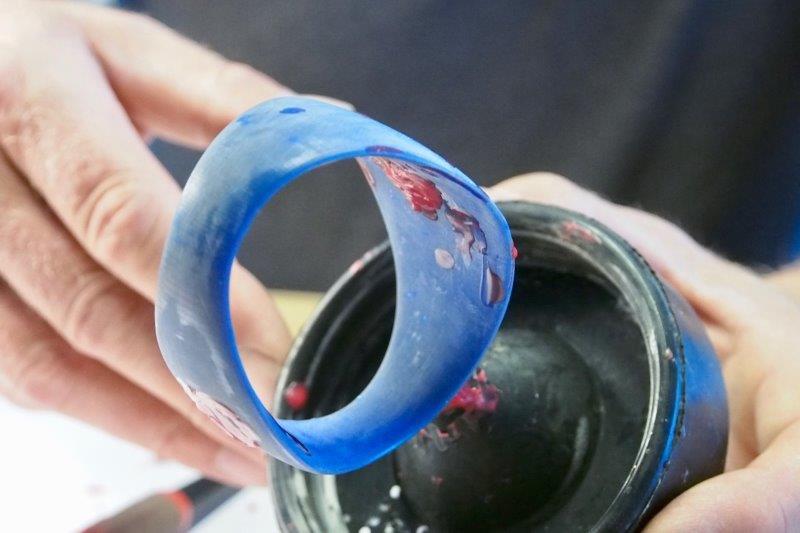

That's the reason all Formlabs bottles have either a manufacture date or a an expiration date. Resin is good for a year after it's made, and maybe another 6-9 months after that. Also how do you know it 2 years old? Unlike FormLabs resin, MakerJuice doesn't have any production or expiration dates on the bottles.īTW, resin that is 2 years old is probably not going to work well, if at all. Only MakerJuice SF is formulated for the Form 1/1+. You mention a Makerjuice G, and maker juice SF. I probably will in the next week or so, from what I read it's less brittle than the FormLabs. I haven't yet tried the MakerJuice resin I bought. All my prints are done at 0.1mm, and unlike an FDM, it's almost impossible to see the layer lines, especially after the model is painted. Nor do I see a point in printing anything even that small. That's 25 microns, 1/4 the smallest layer (0.1mm) we usually print with an FDM printer. There's option for 0.025mm, 0.05mm, 0.1mm and for certain resins 0.2mm. There's no option in FormLabs to do a layer smaller than 0.025. I'm not sure what you mean by doing less than 0.025, or doing 0.01 The printer came with a partial bottle of clear Formlabs resin, but I am not sure there is enough in the bottle for even one vat.Plus unless you have more than one vat, changing resins is a pain in the asterisk. I also find the G is very brittle while the SF is sort of rubbery but still hard. My two year old bottle of Makerjuice G can do. My Makerjuice SF that is supposed to be formulated for the 1 and 1+ cannot do less than. But I am learning that there are limitations to the actual resin. Well I have found watching this printer is less yes less exciting than watching paint peel. Put it this way, if the cross section is about 4mm, Meshmixer would be able to hollow it out anyway. So as you have already surmised, small objects should be printed solid. Thinner than that, and you could end up with holes. The thinnest wall that is reliable is about 1.6-1.7mm. Models with a large cross section should have thicker walls. Speaking of hollowing out an object, The general consensus is that a wall thickness of 2mm is more than adequate for medium size models. You might as well print it solid, because every one of those pockets will trap a little resin, and unless you plan on designing drain holes in every one of them. This stuff, once fully cured is solid, however it can shatter, it doesn't have the tensile strength of ABS.īesides, how do you plan to create a 50% infill inside your model, without creating hundreds of closed pockets. If you're thinking about doing 50% infill for strength purposes, I wouldn't bother. If the model is solid, you don't have to worry about trapped resin, but if it's hollow you should provide some drain holes. Hollow out the object in MeshMixer, then reload it in Preform, and you'll find that more often than not, the volume dropped by half or more. Load up a (relatively) large object in Preform, and it will tell you how much resin it will take (Volume). The reason for hollowing out an object is primarily to save resin, reduce weight, and to reduce the contact surface during print. If you are using Cura on your own computer, make sure you select either the Ultimaker 2+ Extended or Ultimaker 3.There is no infill option with Preform, so if your model is solid (as most models are), it will be printed solid. This will ensure the correct G-Code is created for your printer. The printer’s name can be found on the top of the machine near the Ultimaker logo on the computer in the DSC. In the top left hand corner, select the printer with which you will be printing. Furthermore, you will not need to sign in to an Ultimaker account or connect to Ultimaker Cloud.Ģ. The version in the DSC makerspace has already been set up to be used with the DSC printers, so you won’t need to add or manage any of the printers within the software.
Preform formlabs drain holee how to#
There is lots of great information on Ultimaker’s webpage about how to use Cura. To ‘slice’ your STL into a G-code, you will use Ultimaker’s Cura software. gcode file extension) and the process of turning an STL into a G-code is called slicing.
Preform formlabs drain holee code#
The file of code is called a G-code (with a. Once you have your fully repaired file, you will need to turn that STL file into a file format that the 3D printer can read: that is, a file of code that includes specific movements that the machine will make. Slicing the print job in Cura (Ultimaker only) follow the steps on this video to repair the model:


 0 kommentar(er)
0 kommentar(er)
